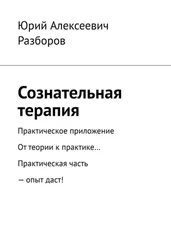Brisch K. H. (2007a). Prävention von Bindungsstörungen. In: W. von Suchodoletz (Hrsg.). Prävention von Entwicklungsstörungen. Göttingen: Hogrefe, 167–181.
Brisch K. H. (2007b). Unterbrechimg der transgenerationalen Weitergabe von Gewalt: Primäre Prävention durch «SAFE® – Sichere Ausbildung für Eltern». Psychologie in Österreich, 1, 62–68.
Brisch K. H. (2007c). Sleep and attachment disorders in children. In: S. R. Pandi-Perumal M. Kramer & R. R. Ruoti (Hrsg.). Sleep and psychosomatic medicine. Boca Raton, FL. Taylor & Francis, 219–230.
Brisch K. H. (2008). Prävention von Gewalt durch die Förderung von Bindungssicherheit und Empathie: «SAFE* – Sichere Ausbildung für Eltern» und «B. A. S. E.® – Babywatching in Kindergarten und Schule». In: M. Franz & B. West-Leuer (Hrsg.). Bindung–Trauma–Prävention. Entwicklungschancen von Kindern und Jugendlichen als Folge ihrer Beziehungserfahrungen. Gießen: Psychosozial-Verlag, 129– 161.
Brisch K. H. (2009a). Bindung, Psychopathologie und gesellschafdiche Entwicklungen. In: K. H. Brisch & T. Hellbrügge (Hrsg.). Wege zu sicheren Bindungen in Familie und Gesellschaft. Prävention, Begleitung, Beratung und Psychotherapie. Stuttgart: Klett-Cotta, 350–371.
Brisch K. H. (2009b). Diagnostik von Bindungsstörungen. In: D. Irblich & G. Renner (Hrsg.). Klinische Diagnostik in der Kinderpsychologie. Die ersten 1 Lebensjahre. Göttingen: Hogrefe.
Brisch K. H. & Hellbrügge T. (Hrsg.) (2003). Bindung und Trauma. Risiken und Schutzfaktoren fur die Entwicklung von Kindern. (3. Aufl. 2009) Stuttgart: Klett-Cotta.
Brisch K. H. & Hellbrügge T. (Hrsg.) (2009). Wege zu sicheren Bindungen in Familie und Gesellschaft. Prävention, Begleitung, Beratung und Psychotherapie. Stuttgart: Klett-Cotta.
Brisch K. H., Buchheim А., Köhntop В., Kunzke D., Schmücker G., Kächele H. & Pohlandt F. (1996). Präventives psychotherapeutisches Interventionsprogramm für Eltern nach der Geburt eines sehr kleinen Frühgeborenen – Ulmer Modell. Randomisierte Längsschnittstudie. Monatsschrift für Kinderheilkunde, 144, 1206–1212.
Brisch K. H., Gontard A. V., Pohlandt F., Kächele H., Lehmkuhl G. & Roth B. (1997). Interventionsprogramme für Eltern von Frühgeborenen. Kritische Ubersicht. Monatsschrift für Kinderheilkunde, 145, 457–465.
Brisch K. H., Buchheim A. & Kächele H. (1998a). Bindungsprozesse beim Übergang zur Elternschaft: Beeinflussung der Eltem-Kind-Beziehung durch eine pränatale und postnatale Intervention für erstgebärende Eltern. 12. Kongreß der Deutschen Gesellschaft für Medizinische Psychologie (DGMP), 4.–6. Juni. Hamburg.
Brisch K. H., Bemmerer-Mayer K., Munz D., Kächele H. (1998b). Angst vor fetaler Fehlbildung und ihre Bewältigung. Internationale Zeitschrift für pränatale und perinatale Psychologie und Medizin, 10 (3), 349–364.
Brisch K. H., Buchheim A. & Kächele H. (1999). Diagnostik von Bindungsstörun – gen. Praxis der Kinderpsychologie und Kinderpsychiatrie, 418, 442–454.
Brisch K.H., Buchheim A., Schmücker G., Köhntop B., Betzler S., Pohlandt F., Pokorny D. & Kächele H. (2000). Development of quality of attachment in high-risk very low birthweight premature infants and maternal attachment representations. 7 thCongress, World Associations for Infant Mental Health, Montreal/Canada, 27 July.
Brisch K. H., Munz D., Bemmerer-Mayer K., Terinde R., Kreienberg R. & Kächele H. (2002). Ultrasound scanning for diagnosis of fetal abnormality and maternal anxieties in a longitudinal perspective. Journal of Reproductive and Infant Psychologie, 20, 223–235.
Brisch K. H., Bechinger D., Betzler S. & Heinemann H. (2003a). Early preventive attachment-oriented psychotherapeutic intervention program with parents of a very low birthweight premature infant: Results of attachment and neurological development. Attachment & Human Development, 5, 120–135.
Brisch K. H., Munz D., Bemmerer-Mayer K., Terinde R., Kreienberg R. & Kächele H. (2003b). Coping styles of pregnant women after prenatal ultrasound screening for fetal malformation. Journal of Psychosomatic Research, 55, 91–97.
Brisch K. H., Bechinger D., Betzler S., Heinemann H., Kächele H., Pohlandt F., Schmücker G. & Buchheim A. (2005a). Attachment quality in very low-birthweight premature infants in relation to maternal attachment representations and neurological development. Parenting: Science and Practice, 5, 311–331.
Brisch K. H., Munz D., Kächele H., Terinde R. & Kreienberg R. (2005b). Effects of previous pregnancy loss on level of maternal anxiety after prenatal ultrasound screening for fetal malformation. Journal of Loss and Trauma, 10, 131–153.
Brisch K. H., Kem C., Luber S. & Speer L. (2008). Longitudinal study on postnatal neurobiological risk and attachment, neurological, and cognitive outcome in very low birthweight preterm infants up to the age of six years. Infant Mental Health Journal, 29, № 49.
Brisch K. H., Heinemann H., Betzler S. & Bechinger D. (eingereicht). Attachment disorganization and neurological development of very low birthweight premature infants: Results of an early preventive attachment-oriented psychotherapeutic intervention program with parents. Development and Psychopathology.
Bromberg P. M. (2003). Something wicked this way comes. Trauma, dissociation, and conflict: The space where psychoanalysis, cognitive science, and neuroscience overlap. Psychoanalytic Psychology, 20, 558–574.
Buchheim A. (2008). Borderline – Persönlichkeitsstörung und Bindung – eine Ubersicht. In: B. Strauß (Hrsg.). Bindung und Psychopathologie. Stuttgart: Klett-Cotta, 253–281.
Buchheim A., Brisch K. H. & Kächele H. (1998). Einführung in die Bindungstheorie und ihre Bedeutung für die Psychotherapie. Psychotherapie, Psychosomatik, Medizinische Psychologie, 48, 128–138.
Buchheim A., Brisch K. H. & Kächele H. (1999). Die klinische Bedeutung der Bindungsforschung für die Risikogruppe der Frühgeborenen: ein Uberblick zum neuesten Forschungsstand. Zeitschrift für Kinder– und Jugendpsychiatrie und Psychotherapie, 27 (2).
Buchheim A., George C. & West M. (2003). Das Adult Attachment Projective (AAP) – Gütekriterien und neue Forschungsergebnisse. Psychotherapie, Psychosomatik, Medizinische Psychologie, 53, 419–427.
Byng-Hall J. (1991). The application of attachment theory to understanding and treatment in family therapy. In: C. M. Parkes, J. Stevenson-Hinde, P. Marris (Hrsg.). Attachment across the life cycle. London–NY: Tavistock, 199–215.
Byng-Hall J. & Stevenson-Hinde J. (1991). Attachment relationships within a family system. Infant Mental Health Journal, 12 (3), 187–200.
Caldji C., Tannenbaum B., Sharma S., Francis D., Plotsky P. & Meaney M. J. (1998). Maternal care during infancy regulates the development of neural systems mediating the expression of fearfulness in the rat. Proceedings of the National Academy of Science, USA, 95, 5335–5340.
Carlson V., Ciccheti D., Bamett D., & Braunwald K. G. (1989). Finding order in disorganization: Lessons from research on maltreated infants attachments to their caregiver. In: D. Cicchetti & V. Carlson (Hrsg.). Child maltreatment. Cambridge, MA: Cambridge University Press, 494–528.
Carrion V. G. & Steiner H. (2003). Trauma and dissociation in delinquent adolescents. Journal of the American Academy of Child and Adolescent Psychiatry, 39, 353–359.
Cassidy J. & Marvin R. S. (1992). Attachment organization in preschool children: Procedures and coding manual. Unveröffentl. Manuskript. Seattle, WA: Mac-Arthur Work Group on Attachment.
Chaffin M., Hanson R., Saunders B., Nichols T., Bamett D., Zeanah C., Berliner L., Egeland B., Newman E., Lyon T., LeToumeau E. & Miller-Perrin C. (2006). Report of the APSAC/APA Division 37 Task Force on Attachment Therapy, reactive attachment disorder and attachment problems. Child Maltreatment: Journal of the American Professional Society on the Abuse of Children, 11, 76–98.
Читать дальше
Конец ознакомительного отрывка
Купить книгу






